After centuries as the most preferred shaving method, why did men stop using straight razor shaving? That’s what we’ll determine in today’s video by briefly considering the history of straight razors and then delving into the changing shaving realities that have made this method of shaving so uncommon today.
History of Straight Edge Razors
Despite their appearance, even cavemen were using primitive razors that somewhat resembled a straight edge razor, although they were made from clamshells or shark teeth, not metal. The ancient Romans later adopted a similar model, consisting of a cutting edge attached to a handle, again, not unlike a modern straight-edge razor, called a novacila, although, to us, they look more like brass knuckles. We wouldn’t recommend trying them today.
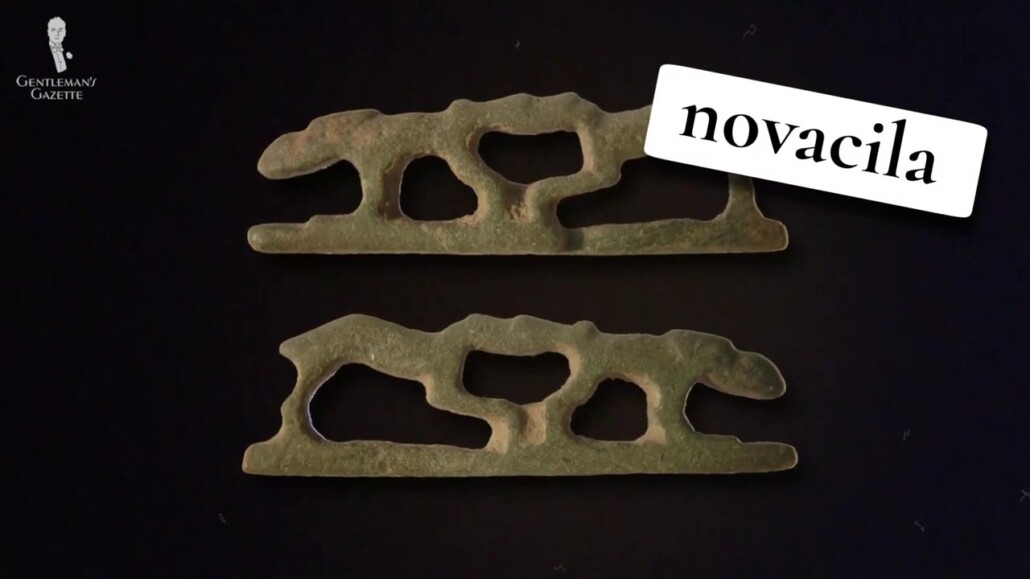
The straight-edge razor that we know today likely originated in England in the 1600s, where high-end models employed bone, horn, or ivory for the grip. Soon, straight-edge razors became the preferred method of shaving for distinguished gentlemen throughout the 1700s. Even the USA’s founding fathers refused to go into battle without a proper shave.
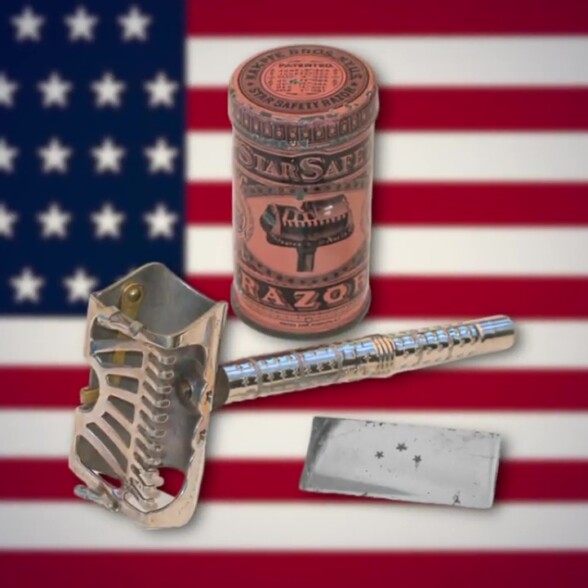
Kampfe brothers
Safety Razors
The prominence of straight edge razors came to an end with the invention of the safety razor by the Kampfe Brothers in the United States in the 1880s. It simplified and made the shaving process efficient and much more convenient, being extremely similar to today’s safety razors.
The realities of World War I increased the necessity of a clean-shaven face, as soldiers had to wear their gas masks and facial hair was thought to be in the way. Time and convenience were everything, and most soldiers grew to prefer the safety razor after they came home from war. Inventor and businessman King Camp Gillette capitalized on this trend, forming a self-named company that enjoys a near monopoly on the shaving industry today.
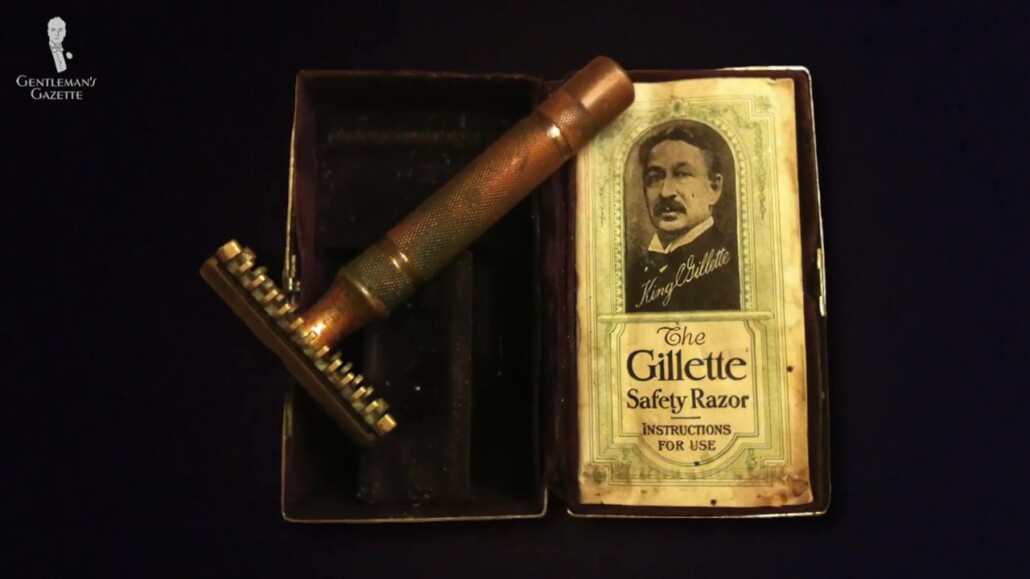
Although straight razor shaving continued to be the preferred method of shaving for barbers and shaving enthusiasts as a luxury, it’s never regained the ubiquity that it once had in the 1700s. We’ve got some thoughts on its decline.
Why Did Men Stop Using Straight Edge Razors?
1. Safety Reasons
It’s no secret that straight razors can be potentially fatal if used incorrectly. Since the blade is so sharp, it requires much more finesse to handle safely, and while a safety razor might give you some nicks or some skin irritation, a wrong move with a straight razor could send you to the emergency room.
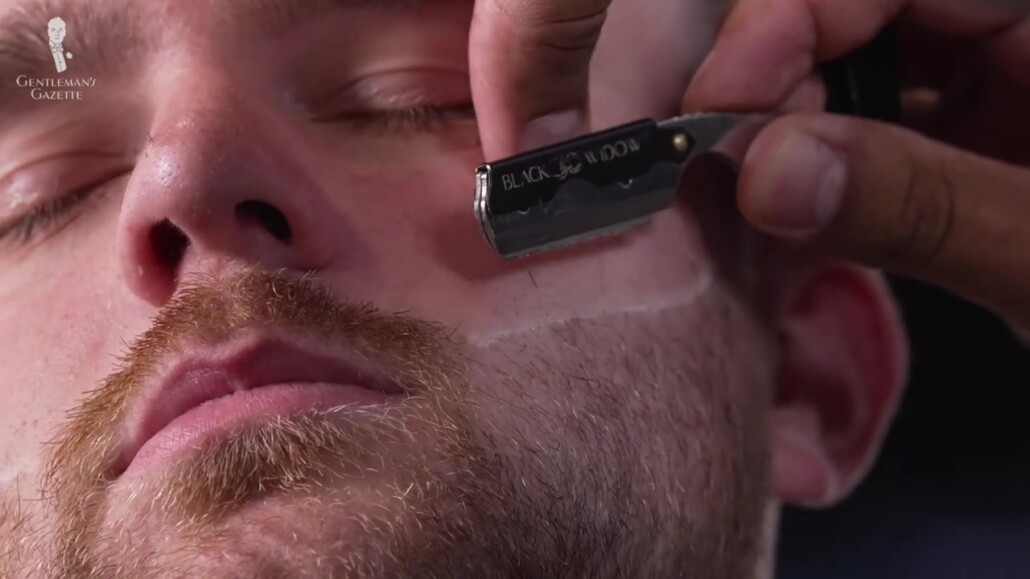
It should be said that modern straight razors have more safety features than their historical counterparts, such as using carbon steel or stainless steel, so the risk of a rusting blade or the dangers of an infection from a cut is much lower. But they’ll never have the same safety features as a safety razor. It’s in the name, after all.
How to Deal with Nicks & Cuts From Shaving
2. Intimidating
Holding a straight razor can sometimes feel like holding a big sharp knife to your throat, which isn’t that far from reality, given that this extra sharp blade is next to some sensitive and vulnerable areas. It can be unsettling to learn to use it effectively as a mishap will make for a very painful lesson for the shaver.
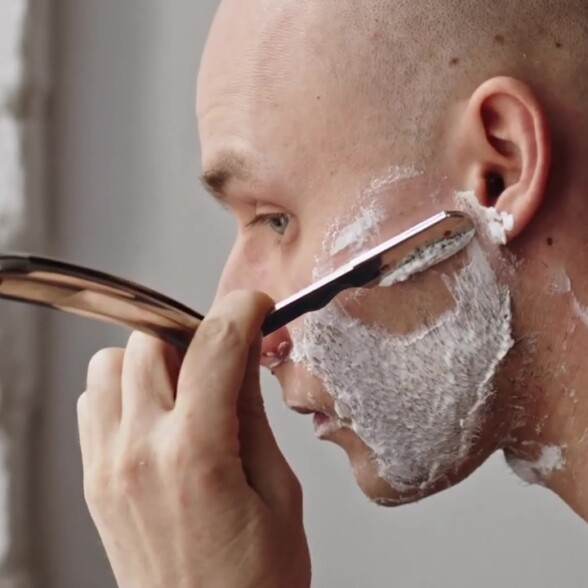
The blade Might
Cut the throat
Before alternatives were developed, men had to learn how to use a straight razor if they wanted to shave, so they had a pretty good incentive to conquer their fears and study the blade. But, modern gents have other options.
This intimidation factor makes it easy to understand why most men would think it’s not even worth considering learning to shave with a straight razor, especially when compared to a more approachable safety razor.
3. Learning Curve
It’s no secret that cartridge razors are fairly easy to use and the method most of us are familiar with. Though it’s not as simple as Occam’s Razor, it doesn’t take much to grasp, and while double-edged safety razor shaving takes practice to master the strokes to get a safe and efficient shave, the process can be learned fairly quickly, and with practice, you’ll soon be shaving like a pro with only some irritation and the occasional cut.
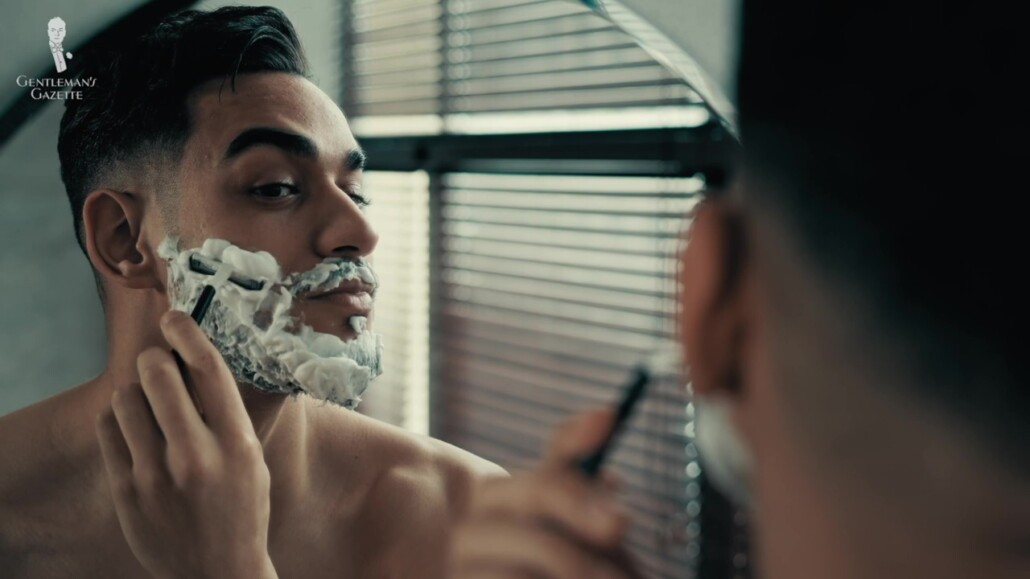
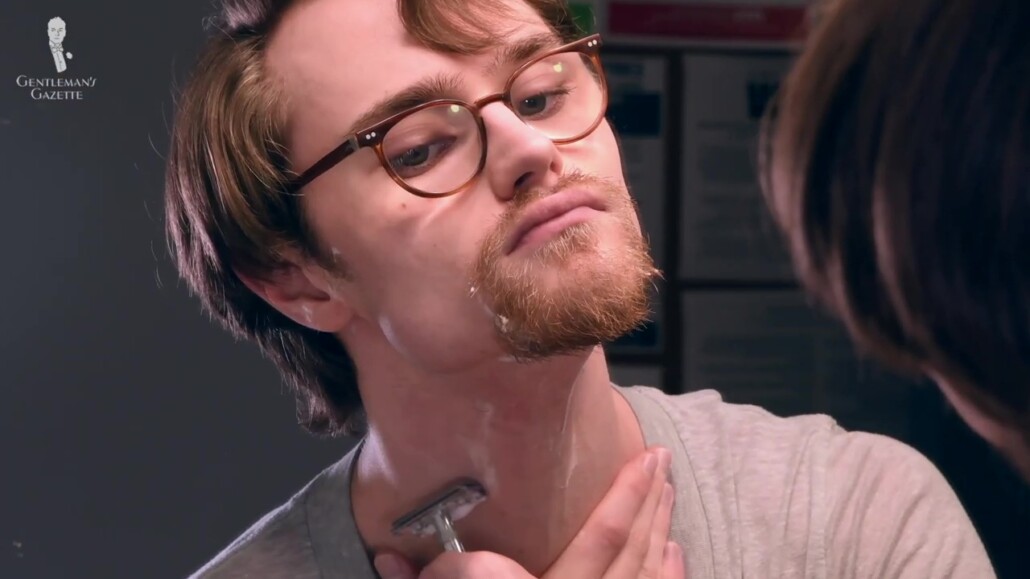
Straight razors relatively require more skill to master since the margin of error is thinner—razor thin, you might say—and requires more time for shavers to get even decent at handling the basics.
While you’re relatively unlikely to do serious damage while shaving with a modern straight razor, it doesn’t always feel like that when you’re a newbie. Holding that big shiny razor up to your neck for the first time, you can expect considerably more irritation cuts and nicks when learning to shave with a straight razor as opposed to a cartridge or safety razor.
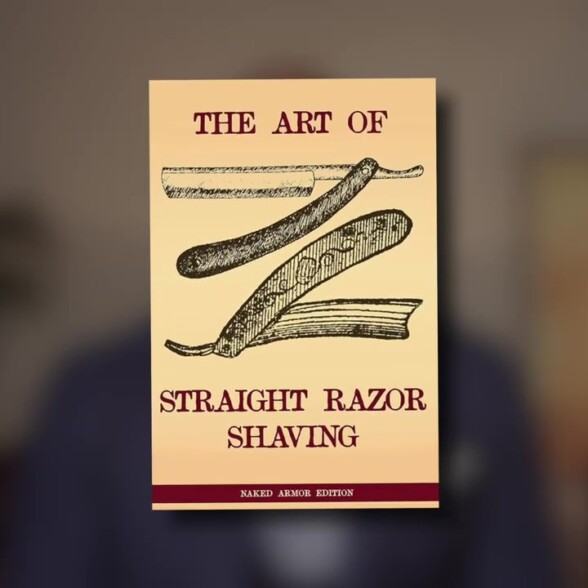
some professionals
Get Certified
Professionals who learn how to offer straight razor shaves often have to study for hours and receive certification. Barbers are often trained by shaving a balloon and preventing it from popping. Needless to say, this illustrates how easy it is to cut yourself when using these tools and why mastery is required.
We say this not to intimidate you but to emphasize that learning how to straight razor shave requires so much effort, you can see why men prefer the simpler alternatives.
4. Inconvenient
Beyond the act of shaving with a straight razor, there’s a considerable amount of prep work required. The straight razor has to be sharpened with a process known as “stropping,” wherein the razor is sharpened before every use on a refining surface, usually a strip of leather called a “strop.”
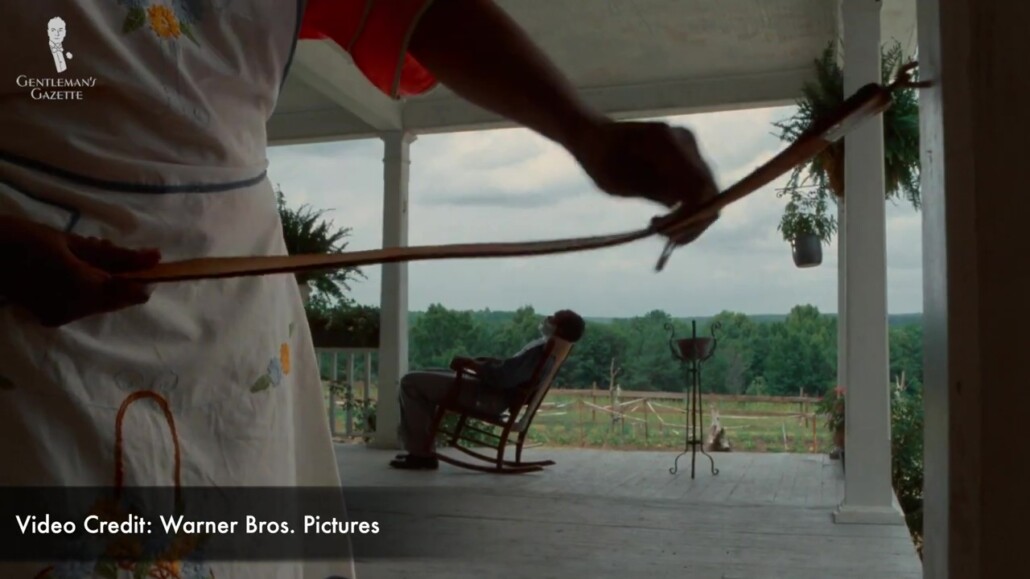
Microscopic burrs are present along the cutting edge of the razor blade, and they can essentially crack if the blade is overutilized. It’s best to let burrs rest for 24 to 48 hours between shaves. This will help prevent damage to the blade, which isn’t very convenient for men with fast-growing facial hair who need to shave multiple times a day. Plus, you then have the additional step of cleaning the blade after use, and sometimes, the strop after use to keep it in pristine shape—just like you occasionally need to have hunting and kitchen knives sharpened.
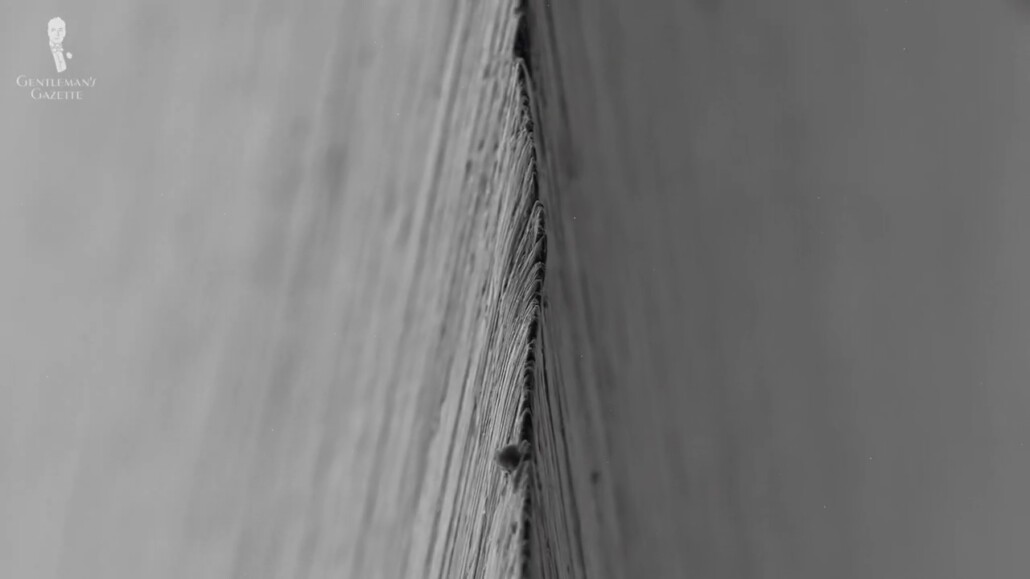
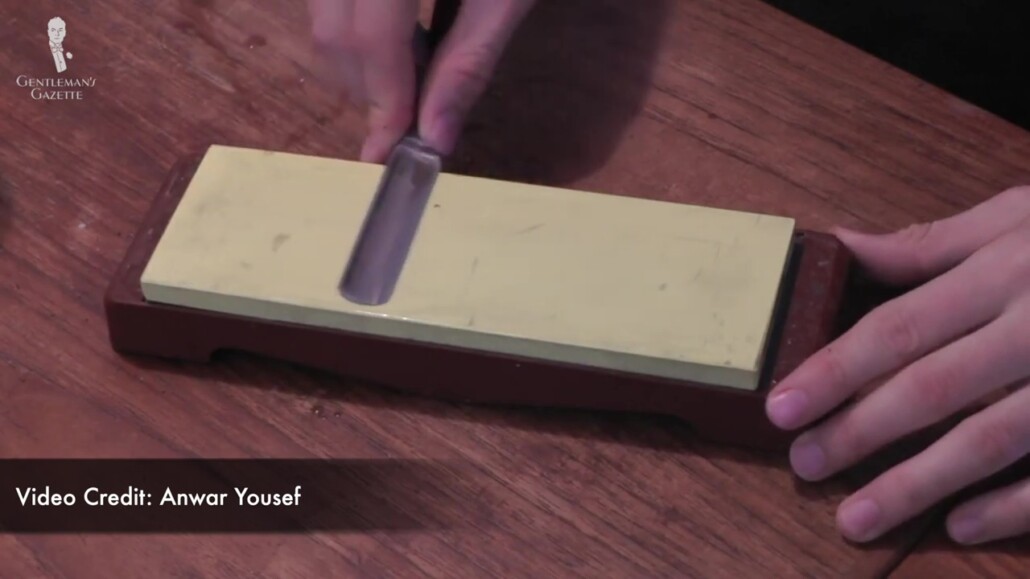
Razors must be honed after regular use, which means sharpened with special tools beyond the strop. You can do this yourself or pay a professional to do it, but be aware that incorrect honing can ruin the blade entirely, so you have to do it correctly. In fact, the straight razor’s blade is so fragile that dropping it can severely damage it, making it the ultimate glass cannon and further contributing to the perception that straight razor shaving is a considerable hassle.
5. Additional Products
Given that the straight razor is a more indulgent way to shave in a modern context, the experience is best completed with quality shaving cream, brushes, shaving soap, lathers, and other products.
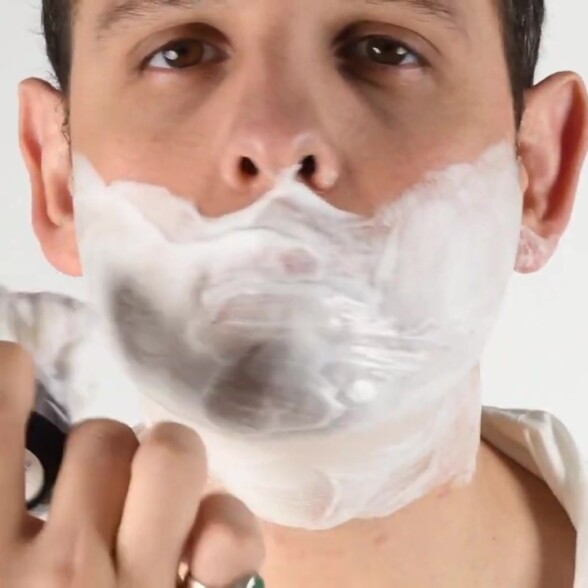
good quality products
Improve your shave
Shaving with a straight razor is almost impossible and potentially dangerous without proper pre-treatment, leading to a more expensive and elaborate process to open and prepare your pores as opposed to using shaving gels or even a dry shave when using a product like a double-edged safety or electric razor.
Plus, you need special tools and services unique to that of a straight razor, such as the aforementioned strop, acid-free oil for cleaning and disinfecting the blade, and honing tools to keep the blade in pristine shape. You could also send out blades to be honed by professional companies at the price of additional cost and time.
Cheap vs. Expensive Shaving Cream
6. Time Constraints
Factoring in the additional setup, special tools and procedures, and careful attention to detail while shaving, it’ll often take 20 to 30 minutes to fully carry out a straight razor shave. As modern-day society places such an emphasis on convenience above all else, it’s not surprising that the considerably more efficient double-edged or cartridge razor products supplanted the method of straight-edge razors.
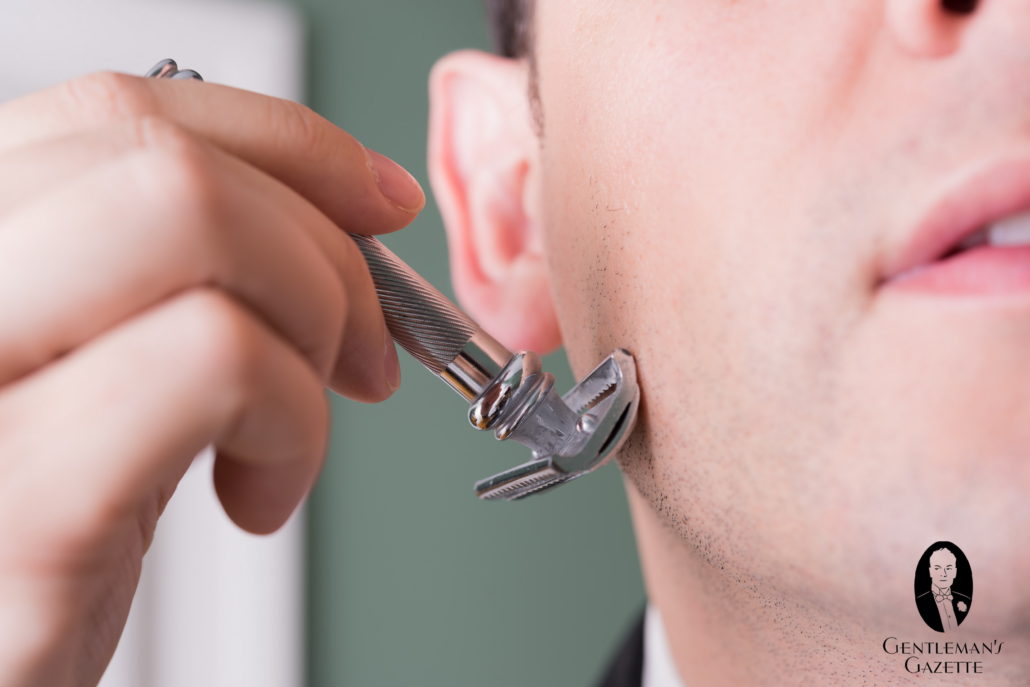
Most modern shavers are okay with an adequate quality shave that only takes a couple of minutes over a superb one that takes a half hour to complete. How many of us can focus on anything for a half hour uninterrupted anyways? So, unless someone loves the art of shaving, they will probably just opt for what is fastest. Perhaps that’s why many men view a straight razor shave as a treat reserved for special occasions.
7. Hard to Find
As straight razors have fallen out of favor, there’s also the practical fact that few stores physically stock straight razors anymore. Most consumers have to rely on online retailers, which can make assessing quality difficult.

Because there’s considerable hype around straight-edge razor shaving as a concept, some unscrupulous companies sell inferior straight-edge razors. They look the part, but they don’t actually function well. The only thing more dangerous than a straight razor is a poorly made straight razor.
8. Harder to Travel With
Considering that a straight razor requires certain additional items to function properly, it’s harder to travel with all of its needed accouterment given how little space we can have when on the road, becoming a less convenient option on the go. If flying, you also have to pack the straight-edge razor in your checked luggage because you can’t have edged implements in the airplane cabin, which is a hassle for those who prefer carry-on luggage only.
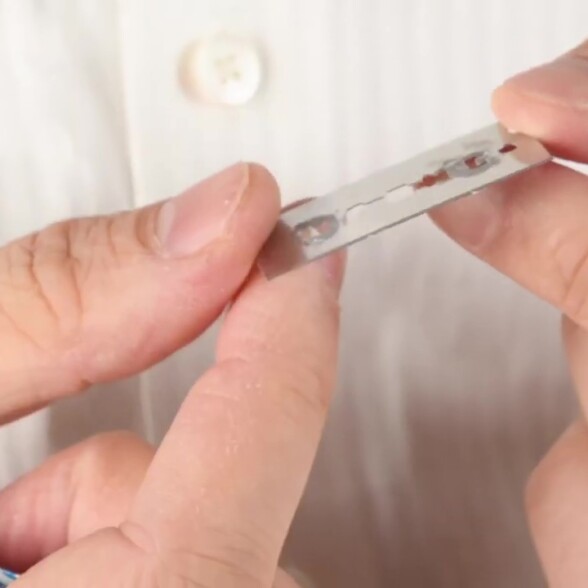
Without a blade, You can take a
DE Safety Razor Inflight
You can’t take a DE safety razor with the blade in the cabin either, but you can bring your razor itself, and wherever you are going, you can probably find DE razor blades available for cheap, which is definitely not the case for straight-edge razors.
BEST & WORST Blades for Safety Razor & DE Shaving (Review)
9. Straight Razor Perceptions
The way these razors are perceived also had an impact. Straight razors are almost exclusively seen in Hollywood films and historic period pieces, and it’s usually going to be perceived as an antiquated, backwards way to shave. You don’t bathe like a 17th-century brigand; why would you shave like one? They’ve been depicted as deadly weapons in some circumstances, which only contributes to the perception that they can’t be used safely.
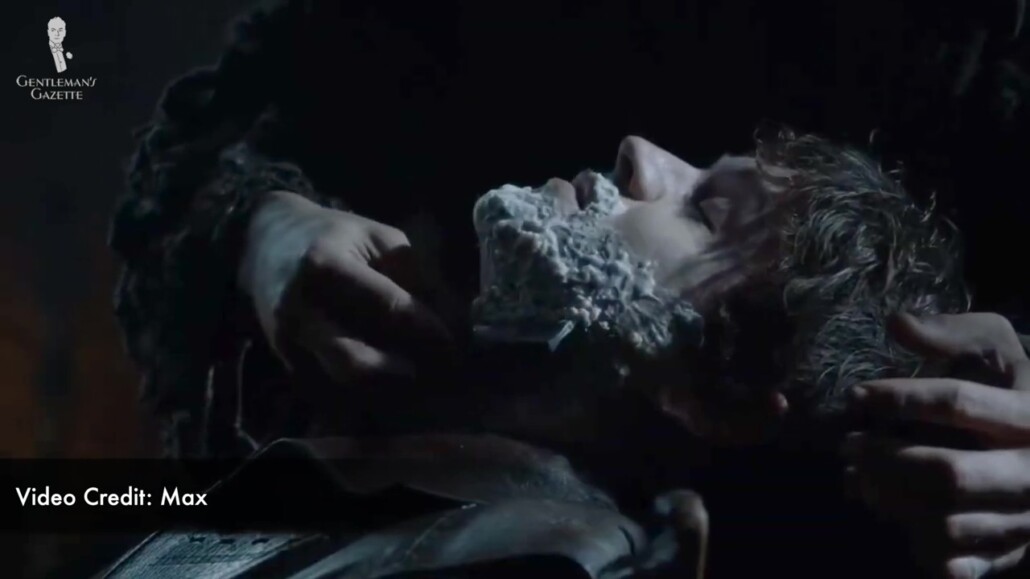
Outside of these old-fashioned settings, straight-edge razors are rarely seen because modern advertising focuses on safety and cartridge razors, and thus, many men have never been exposed to a straight razor as a modern shaving tool—let alone use one.
Conclusion: Should Men Use Straight Razors Today?
The appeal of a straight razor today won’t be for everyone, but if you value your grooming highly and love the ritual of shaving, it’s a great option. The enthusiasts of straight razors often claim that the results are always superior; hence, many specialty barbers today opt to use them.
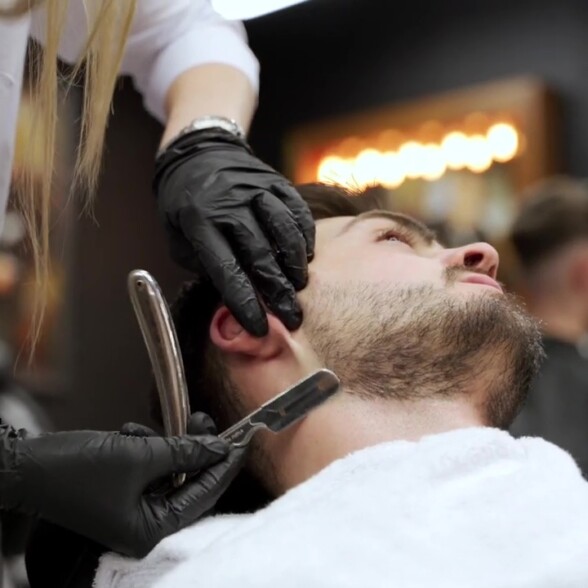
The shaving process
Can Be Quite Therapeutic
The process can also be quite therapeutic and give you some much-needed me time. Whether this process is done by yourself, or a professional barber, it can be a fun process to engage in occasionally, even if you don’t do so consistently. We think it’s something everyone should try at least once in their lifetime, and you can decide which option is better for you from there.
Ultimately, there are a lot of reasons as to why men stopped using straight razors, and there’s a reason why safety razors have come to dominate the industry. It could definitely be argued that, in many ways, safety razors represent a massive improvement from straight razors: the old-fashioned way isn’t always better.
With that being said, there’s still a place for straight razors in a modern context; in fact, there’s a whole subculture around the practice, and it can be something of a hobby to get into.
How often do you use a straight razor or have a straight razor experience from a barber? Let us know in the comments.
Check out our dedicated guide if you’re interested in experiencing straight-edge razor shaving for yourself.
Straight Razor Shaving Guide
Outfit Rundown
Today, I’m wearing a three-piece, navy pin-stripe suit with brown dress shoes, brown dress socks, and a blue dress shirt, and finishing off the outfit, I have the Roberto Ugolini fragrance, High Heel White, and, of course, a white pocket square from Fort Belvedere with a pink trim on the inside.
FAQ
When did barbers stop using straight razors?
Straight razors gradually lost their prominence after WW1, when the faster, more convenient way to shave with safety razors became the norm.
Why don’t barbers use straight razors?
Many barbers don’t use straight razors anymore because it can be extremely dangerous if improperly trained and requires a specialized skillset to master
Does anyone still shave with a straight razor?
Some enthusiasts and specialty barbers still use straight razors, but the practice is now a niche hobby as opposed to the de facto option.


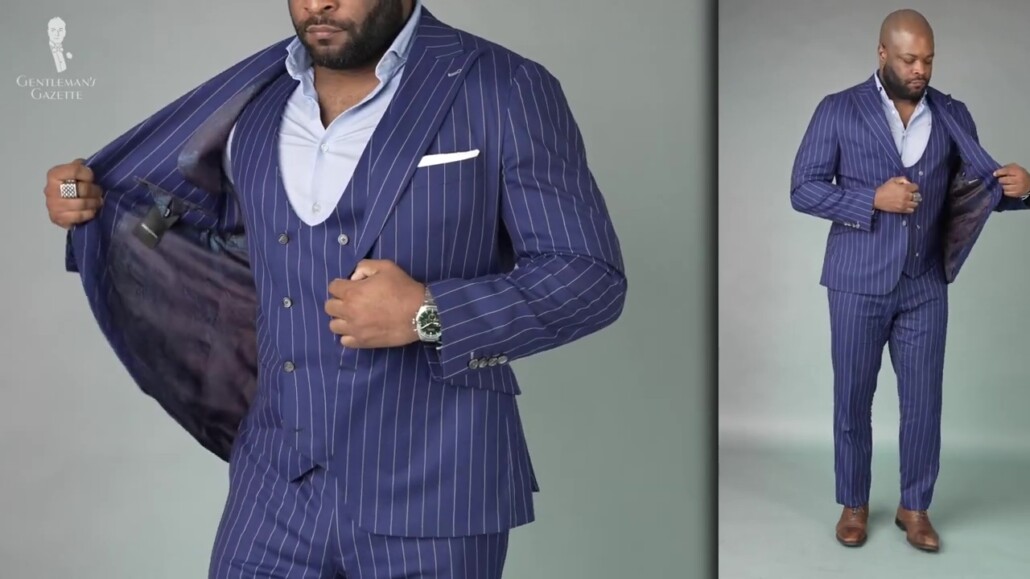
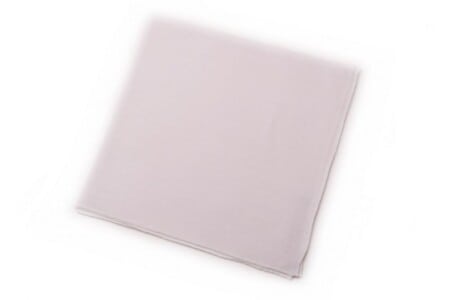
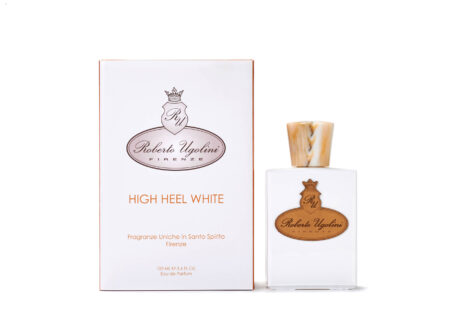
Straight or bust. It’s not THAT hard to set aside enough time for it, given the superior results and more enjoyable process… especially if you’re sporting facial hair and you’re just cleaning up around the edges.
If you’re unable to swing it due to travel, feel free to rock the DE for that duty. A razor doesn’t have to be an exclusive either/or proposition. Different tools for different situations.
Hi GG,
I ordered one on Ebay, got it, tried it out and ended up cutting my shin. It’s now collecting dust in the bathroom cabinet. Am still gathering confidence to try it out again.
Probably needs a proper hone job and a thorough stropping if you got it off eBay.
Also, make sure your “angle of attack” isn’t too steep.
I am quite old-fashioned with many things, except for shaving. I use a fancy cartridge-based razor, with a battery in it that vibrates the blade. I love it and would never go back to any other method. I am completely baby-faced after a shave and it takes minutes.
I use a straight razor exclusively because I don’t get razor burn or bumps on my neck. If you use the old school wedge instead of a hollow ground blade it is much kinder to your skin. A shave takes longer but lasts longer. I only need to shave 3 times per week.
In my younger days I used brush soap and cutthroat razor. As a freshman in college it made for an interesting time at the annual shaving cream battle. Using mug and brush versus aerosol foam is quite challenging, I had to politely ask opponents to hold still for a moment. I now shave with DE. My old hands are no longer steady enough to feel safe.
Some things to remember about straight-razor shaving: Angle (30 degree off the skin with the Fin as a pivot point), Pressure ( Use light minimal pressure don’t dig for gold all you’ll get is liquid ruby) and be fully aware of placement of the blade. Look at the average straight-razor, they’re a bit longer than the average DE or cartridge blades. I found that out the hard way and almost sliced my ear in half at the earlobe going down starting at the sideburn when first learning.
Also use very short strokes.
When wet shaving, to get the closeset shave possible it’s been said to shave twice, down all the way the first shave the up the throat and across the face the second.
When first learning to use this tool only shave small areas (example: sideburn to bottom of earlobe) first till you get confident enough to shave larger areas. It’s said it takes 6 mos. to a year to fully master the straight razor. I assume that’s if you utilize it for every shave. Good luck. It takes time. As previously I mentioned the angle, I like to start off with the blade flat against my face then slowly pivot the blade until I feel it cut the hair. No more than that.